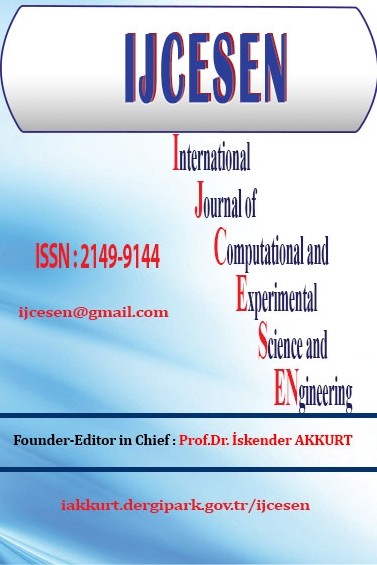Fuzzy Logic Approach for Warping Problem In 3D Printing
Fuzzy Logic Approach for Warping Problem In 3D Printing
Fuzzy Logic, 3d printing FDM, ABS warping, Additive Manufacturing,
___
- Stansbury, J. W. & Idacavage, M. J. (2016). 3D printing with polymers: Challenges among expanding options and opportunities. Dental Materials, 32(1), 54–64. https://doi.org/10.1016/j.dental.2015.09.018
- Tumbleston, J. R., Shirvanyants, D., Ermoshkin, N., Janusziewicz, R., Johnson, A. R., Kelly, D. DeSimone, J. M. (2015). Continuous liquid interface production of 3D objects. Science, 347(6228), 1349–1352. https://doi.org/10.1126/science.aaa2397
- Weng, Z., Wang, J., Senthil, T., & Wu, L. (2016). Mechanical and thermal properties of ABS/montmorillonite nanocomposites for fused deposition modeling 3D printing. Materials & Design, 102, 276–283. https://doi.org/10.1016/j.matdes.2016.04.045
- Wang, S., Hu, Y., Song, L., Wang, Z., Chen, Z., & Fan, W. (2002). Preparation and thermal properties of ABS/montmorillonite nanocomposite. Polymer Degradation and Stability, 77(3), 423–426. https://doi.org/10.1016/S0141-3910(02)00098-8
- Guerrero-De-Mier, A., Espinosa, M. M., & Domínguez, M. (2015). Bricking: A New Slicing Method to Reduce Warping. Procedia Engineering, 132, 126–131. https://doi.org/10.1016/j.proeng.2015.12.488
- Rictor, A., & Riley, B. (2016) Optimization of a Heated Platform Based on Statistical Annealing of Critical Design Parameters in a 3D Printing Application. Procedia Computer Science, 83(Ant), 712–716. https://doi.org/10.1016/j.procs.2016.04.157
- Mehmet Nuri ÖDÜK. Ph. D. Thesis (2010). Konya –Selçuk University Graduate School of Natural and Applied Sciences SELÇUK ÜNİVERSİTESİ.
- Derrouazin, A., Aillerie, M., Mekkakia-Maaza, N., & Charles, J. P. (2017) Multi input-output fuzzy logic smart controller for a residential hybrid solar-wind-storage energy system. Energy Conversion and Management, 148, 238–250. https://doi.org/10.1016/j.enconman.2017.05.046
- Yayın Aralığı: 4
- Başlangıç: 2015
- Yayıncı: Prof.Dr. İskender Akkurt
Dependent Dummy Variable Models: An Application of Logit, Probit and Tobit Models on Survey Data
Öznur İŞÇİ GÜNERİ, Burcu DURMUŞ
Development of Design for Enhancing Trust in Cloud’s SPI Stack
Ahmed BENTAJER, Mustapha HEDABOU, Faouzia ENNAAMA, Said ELFEZAZİ
Determining the Best Maternity Hospital by Using a Fuzzy Decision Making Model
Billur ECER, Ahmet AKTAS, Mehmet KABAK, Metin DAĞDEVİREN
Evolutionary Search Algorithm Based on Hypercube Optimization For High-Dimensional Functions
Experimental Study on Fracture Conductivity in Hydraulic Fracturing
Xingyuan LİANG, Fujian ZHOU, Tianbo LİANG, Jiawei ZHU, Rui WANG
Analysis of TSP: Simulated Annealing and Genetic Algorithm Approaches
Ahmet Reha BOTSALI, Kemal ALAYKIRAN
e-Migraine: Development of a comprehensive tool to estimate Migraine Comorbidity Index Score
Didem DERİCİ YILDIRIM, Bahar TAŞDELEN, Tufan MENGİ, Aynur ÖZGE, Hamit GENÇ
Erhuvwuvoke EBOJOH, Elohor Diamond AKPOBİ
